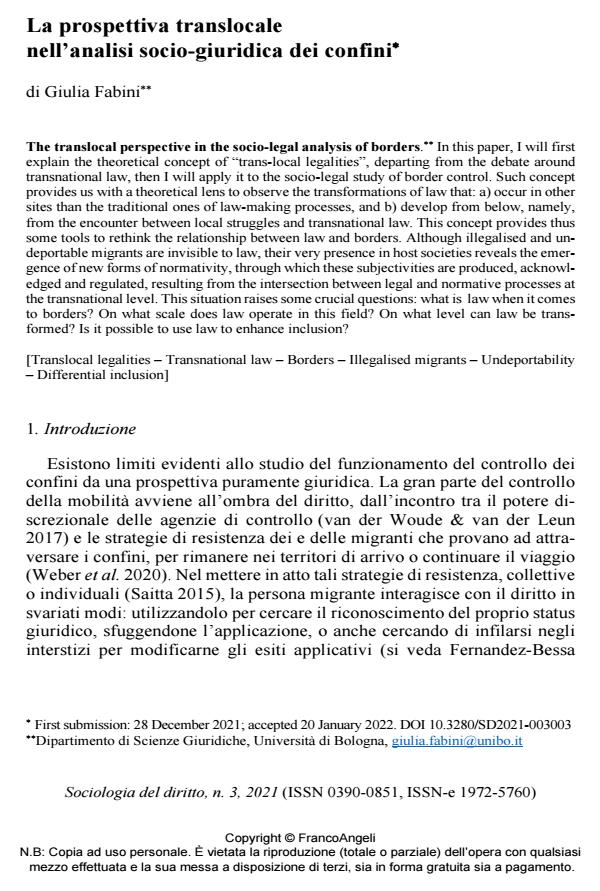La prospettiva translocale nell’analisi socio-giuridica dei confini
Titolo Rivista SOCIOLOGIA DEL DIRITTO
Autori/Curatori Giulia Fabini
Anno di pubblicazione 2021 Fascicolo 2021/3
Lingua Italiano Numero pagine 25 P. 43-67 Dimensione file 247 KB
DOI 10.3280/SD2021-003003
Il DOI è il codice a barre della proprietà intellettuale: per saperne di più
clicca qui
Qui sotto puoi vedere in anteprima la prima pagina di questo articolo.
Se questo articolo ti interessa, lo puoi acquistare (e scaricare in formato pdf) seguendo le facili indicazioni per acquistare il download credit. Acquista Download Credits per scaricare questo Articolo in formato PDF

FrancoAngeli è membro della Publishers International Linking Association, Inc (PILA)associazione indipendente e non profit per facilitare (attraverso i servizi tecnologici implementati da CrossRef.org) l’accesso degli studiosi ai contenuti digitali nelle pubblicazioni professionali e scientifiche
In this paper, I will first explain the theoretical concept of "trans-local legalities", departing from the debate around transnational law, then I will apply it to the socio-legal study of border control. Such concept provides us with a theoretical lens to observe the transformations of law that: a) occur in other sites than the traditional ones of law-making processes, and b) develop from below, namely, from the encounter between local struggles and transnational law. This concept provides thus some tools to rethink the relationship between law and borders. Alt-hough illegalised and undeportable migrants are invisible to law, their very presence in host societies reveals the emergence of new forms of normativity, through which these subjectivi-ties are produced, acknowledged and regulated, resulting from the intersection between legal and normative processes at the transnational level. This situation raises some crucial questions: what is law when it comes to borders? On what scale does law operate in this field? On what level can law be transformed? Is it possible to use law to enhance inclusion?
Parole chiave:Translocal legalities - Transnational law - Borders - Illegalised migrants - Undeportability - Differential inclusion
Giulia Fabini, La prospettiva translocale nell’analisi socio-giuridica dei confini in "SOCIOLOGIA DEL DIRITTO " 3/2021, pp 43-67, DOI: 10.3280/SD2021-003003